The DGNB (Deutsche Gesellschaft für Nachhaltiges Bauen, or German Sustainable Building Council) exemplifies the current state of the art related to the built environment. They describe the ratings of their four certification levels in terms of sustainability.
The purpose of DGNB Heart rating is to reward buildings that make an extra effort for the well-being of space users. DGNB Heart has been developed based on the five main categories: Air quality, acoustics, visual comfort, thermal comfort, and architectural value.

The term “the third skin” was coined by architect and urban planner Albert Speer Jr. It refers to the built environment or architecture, which is considered the third layer of protection for humans, following the biological skin (first skin) and clothing (second skin). It emphasizes the role of architecture in providing shelter, comfort, and safety for human beings.
United Nations Population Fund (UNFPA), defined in 2016 the need for spiritual growth in humans and our organizations to reach our commonly defined Sustainable Development Goals (SDG) 2030. Various organizations support this approach e.g., Inner Development goals (IDG) with a sub line as: “Transformational skills for a sustainable development”, the Institute for Noetic Sciences” (IONS), writing a sub line of “the interconnected nature of reality”, or the Galileo Commission, entering a sub line for “expanding the scope of science”.
In that perspective, the present article aims to proceed transcending the third skin into a dimension including inner sustainability and industry growth. I focus on quantum physics extending its regularities to practical applications with the aim disclosing possibilities of transcending the built environment.
After a brief outline of the state of current crisis, we start transcending, lifting our minds to a place where the professionally trained Architects and Interior Designers can grow the industry. This article limits itself to including the science of quantum physics. Hence, this is not a comprehensive work on quantum physics. The science is approached from a stand of transformational architecture and interior design with the purpose of understanding related regularities and putting these to practical use for trained Architects and Interior Designers transcending the built environment for the further welfare of space users.
During the process, I ask the readers of their personal experience of various environments. I would very much like you to write to me from https://www.blissbode.live/. Thank you so much in advance.
Setting off: Crises
Steen Hildebrandt, Professor Emeritus at Aarhus University, CBS, and Aalborg University, conveys how the past is often not a very good guide for how we should move into the future. There is a great risk in leading architecture and design companies into the future by using the thought patterns and solution models of the past. We call it habitual thinking or Best Practice. Then crises arise: we overlook the important, critical and promising development trends: the path to new strategies, visions and identities.

Best practice keeps us in old habits and patterns that we constantly try to optimize. Instead, we could use Best Future Practice by facing the future listening, creatively and co-creation wise. A lot of best practice thinking contributes to increasing the speeds at which we move: we optimize operations by extending the past and its premises into the future.
Professor Katarina Juselius, Copenhagen University, informs that standard economic theories’ models are based on the fact that growth can continue indefinitely. However, in many ways growth has now come so far that we are meeting the ceiling in the form of desired natural resources.
Every person decide which physical substances and products are to be produced, distributed, and consumed. Such affects himself and his surroundings around the clock – significantly. Many people do not think about the influence they have, Hildebrandt points out.
He has written extensively on various contemporary societal challenges and crises. It is of interest for me to investigate how Architects and Interior Designers can contribute to disarm our collective environmental crises. A general list of our common societal crises include:
Economic Inequality and Social Disparities
Disparities in income and wealth distribution has led to social tensions, reduced social mobility, and challenges in accessing basic needs such as healthcare and education.
Sir David Adjaye is an architect known for his commitment to social impact and community engagement. His projects are examples of contributions to better welfare in Western societies applying inclusivity, cultural sensitivity, and sustainability, addressing issues such as affordable housing, public space, and heritage preservation.
Political Polarization and social Fragmentation
Western societies have experienced increasing political polarization, with deepening divisions between ideological, cultural, and socioeconomic groups. This polarization has contributed to gridlock in governance, erosion of trust in institutions, and challenges to democratic norms.
Efforts to contribute to a current system solution are performed by Bjarne Ingels, for example, who is an architect renowned for his visionary approach to design, blending sustainability, functionality, and social responsibility in his projects.
Climate Change and Environmental Degradation
Climate change and environmental degradation pose significant threats to Western societies, including extreme weather events, loss of biodiversity, and resource depletion. These challenges exacerbate existing vulnerabilities and require urgent action to mitigate their impact.
The HOK biophilia philosophy leads to incorporation biophilic principles into their projects. Biophilia, a term popularized by biologist Edward O. Wilson, refers to the innate human tendency to seek connections with nature and other living systems. Biophilic design aims to create environments that support human health and well-being by integrating natural elements, materials, and patterns into the built environment.
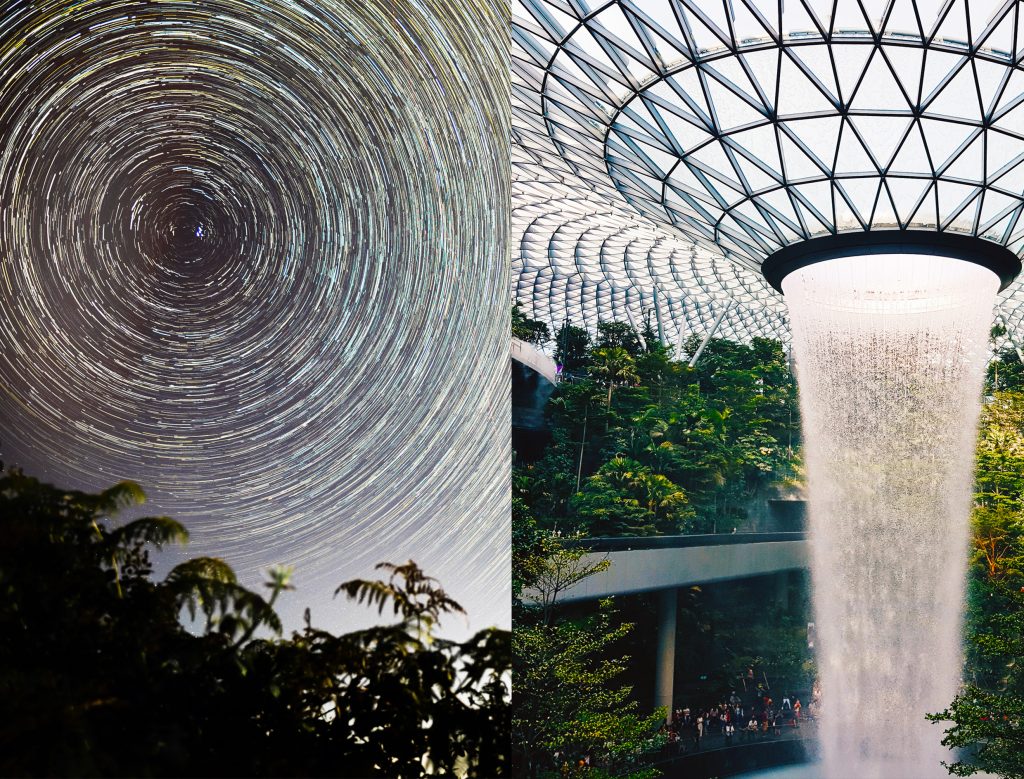
Global Health Pandemics and Public Health Crises
Western societies have faced public health crises such as the opioid epidemic, mental health challenges, and infectious diseases outbreaks (e.g., COVID-19 pandemic). These crises have strained healthcare systems, disrupted economies, and highlighted systemic inequalities.
Perkins&Will is an international architectural and design firm known for its commitment to evidence-based design (EBD) integrating credible research findings into the planning and design of environments, such as healthcare facilities.
Technological Disruption and Ethical Challenges
Rapid technological advancements, including automation, artificial intelligence, and digitalization, have reshaped economies and societies in the West. While offering opportunities for innovation and growth, these changes also raise concerns about job displacement, privacy, and social cohesion.
Frog Design specialize in integrating smart solutions and Internet of Things (IoT) technologies into residential spaces to create smart homes, helping homeowners and technology companies conceptualize, design, and prototype smart home devices and systems that integrate seamlessly into residential environments.
Demographic Shifts and Migration
Western societies are experiencing demographic shifts, including aging populations, declining birth rates, and increasing cultural diversity due to migration. These trends present both opportunities and challenges in areas such as labor markets, social cohesion, and integration.
For example, Elizabeth Diller, an architect and founding partner of Diller Scofidio + Renfro, is known for her interdisciplinary approach to design and her collaborative ethos. She has led numerous award-winning projects that blur the boundaries between architecture, art, and technology.
The crises listed above are often interconnected and require holistic approaches for effective solutions. Hildebrandt’s works emphasize the importance of sustainable leadership, innovation, and systemic thinking in addressing these challenges and creating positive change in society.
The above-mentioned list includes examples of architects or interior designers who try to impact the global crisis positively for our common good. However, this is pursued from the same preconditions as the thought pattern (mindset) that created these crises in the first place. Imperative, is the integrated notion of separateness: Most of us believe that the crises we desire to transform is something outside of us.
A holistic problem-solving approach agrees with Einstein’s broader philosophy on creativity and tackling complex issues, as cited:
“You cannot solve a problem with the same mind that created it.”
A. Einstein
In fact, we can perspective the quote as per Rose Sangregorio’s spiritually transforming teachings:
A human being is a part of a whole. We know about the universe as limited in time and space, and personally referred to as each our individual soul experienced as thoughts and feelings, separated from other souls. In such cases the box becomes a prison, and an optical delusion. Human actions outside the box connect with our collective conscious awareness. We contribute to harmony by being in the divine light, bringing everything to divine tone, frequency, and vibration.
Quantum Physics, Industry Growth and Transcended Welfare
Please allow me to provide my expertise and visionary insights as motivations to shape the direction and contributions of the interior and architectural industries to harmonious environments inviting to human welfare of the space users. Below, I will challenge conventional thinking by encouraging to the growth of our expanded human capacities, concluding with an introduction to novel concepts, driving business development of the interior and architectural industries and inviting our field to contribute to harmonizing our common societal crises.
Being a lifelong learner, embracing collaboration and interdisciplinary exchange, I actively seek out new knowledge, engage with diverse perspectives to foster a culture of innovation and creativity that I would like to share with you.
Interdisciplinary exchange for expanding our minds is eased by a brief historical perspective, venturing into a biased philosophical approach, as we focus on a change of mindset. Aiming to provide a direction for the industries contributions to a coherent future we gently approach the changing mindset from a future that started in the 20th century. The dramatic influences on our future directions are enlightened by sources from other cultures. Interdisciplinary visits to quantum physics contributes to holistic architecture and design and provides an understanding of the abilities of the interior and architectural industries to contribute to harmonizing the above-mentioned crises and enable further coherence for the common good of our societies.
It is my hope during this journey, that you will enlighten me of your experiences in the built environment, for example ‘how does the building feel, when it has burned (previously)’ or ‘how does it feel resting on top of an animal mass grave’, and how could you heal it for preventing further impacts of current day built environment and clients. Above are typical questions met in a process and further down the text, I ask a few more. I will be happy if you write your comments to me on https://www.blissbode.live/.
History
The history of interior design and architecture in both Eastern and Western cultural spheres is a rich tapestry of artistic, architectural, and cultural influences. In the East, particularly in regions like China, Japan, and India, interior design has been deeply rooted in principles, perceived by Westerners as those of harmony, balance, and spirituality.
Feng Shui is one such interior design principle, requested since approximately B.C.E 2500. Grand masters Stephen Skinner and Dr. J.T.Y. Lim have made significant contributions to Western understanding of Feng Shui, particularly concerning implications for productivity and societal structure. A scholarly discussion of how Feng Shui has been intertwined with Chinese society and governance, shaping urban planning and architectural design to optimize productivity and social harmony, historically and in modern-day Hong Kong, is performed by Grand Master Dr. Lim.
They both draw upon historical records, philosophical texts, and empirical observations to elucidate Feng Shui’s enduring relevance in shaping environments that support human welfare.
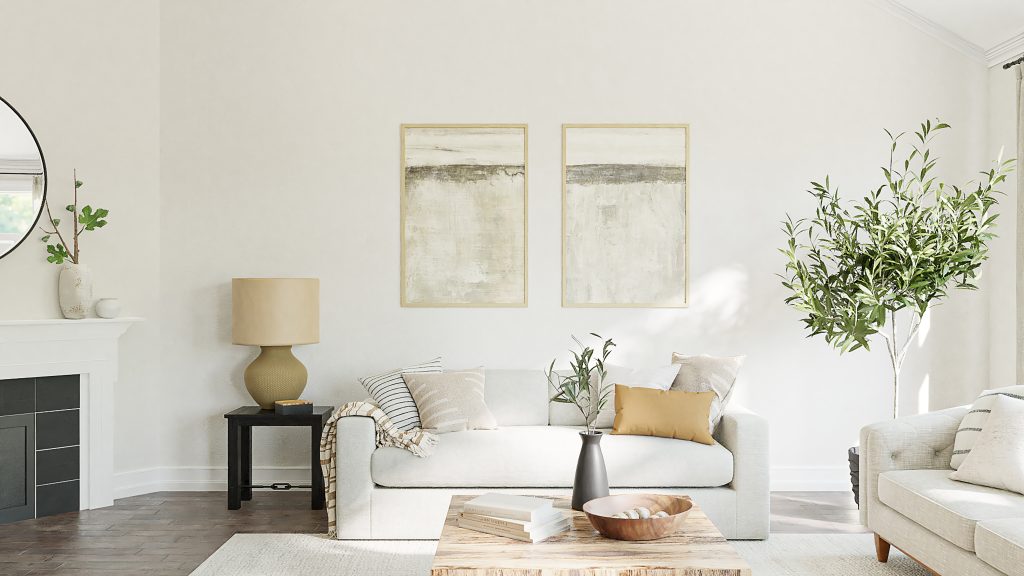
Conversely, Western interior design has been shaped by diverse idea-historical periods and styles, reflecting societal values, technological advancements, and artistic movements. From the opulence of Baroque and Rococo to the functional simplicity of Modernism, Western interiors have showcased a wide range of influences and design philosophies. Innovations in materials, furniture design, and architectural techniques have played significant roles in the evolution of Western interior design.
You might conclude that the Eastern approach to architecture and interior design was based on a conscious societal philosophical approach, applied from the societal management, opposite to a Western approach embracing a development of ideas and tendencies.
Philosophy
A Western, modern (20th century) approach to societal productivity and well-being is represented by the Bauhaus Movement where functionalism, and minimalism are all influential design philosophies that have left a lasting impact on architecture, interior design, and product design in the Western cultural sphere.
In its time (founded in 1919), a revolutionary school of art, design and architecture aiming to create functional and aesthetically pleasing designs accessible to all. The dominant functional design emphasized the importance of form following function. Utility, efficiency, and practicality were prioritized, eschewing unnecessary ornamentation in favor of clean lines and rational design solutions. Functionalistic design solutions were marketed as aesthetically pleasing.

Functionalism inspired minimalism. They share common principles of simplicity, functionality, and clarity. Both movements continue to inspire designers and shape contemporary design practices, reflecting enduring values of modernism and simplicity in the built environment.
Minimalist artists and designers sought to strip away excess and focus on essential elements, often using geometric forms, monochromatic palettes, and sparse compositions, focusing on austerity and negative space.
These historical ideas continue to influence contemporary design practices, shaping the way we interact with and experience the built environment.
Functionalism and the Holistic Human
Natural sciences have come to contrast the above Western design ideas of austere minimalism.
Danah Zohar, a renowned author, and thinker in the fields of philosophy, physics, and management, has offered insightful perspectives on how functionalism, and minimalism influence individuals. A brief comment based on her broader work on spirituality and consciousness:
In the context of functionalism, Zohar might highlight its emphasis on efficiency, utility, and practicality in design and organization. While functionalism can lead to streamlined processes and optimized systems, Zohar might caution against reducing human experiences solely to their functional aspects. She might argue that functionalism, if taken to extremes, could overlook the deeper emotional, psychological, and spiritual needs of individuals, potentially leading to disconnection and disengagement, neglecting the holistic nature of human experience.
Minimalism is perceived as a response to the excesses and consumerism of modern society, advocating for simplicity, clarity, and mindfulness in both design and lifestyle. However, she might also caution against a superficial embrace of minimalism that ignores deeper systemic issues or neglects the emotional and relational aspects of human existence.
Boredom, Stress, and Nature
Individuals are under stimulated and bored in superficial functionalistic and minimalistic environments. Insights into related research and principles from neuroscience and psychology is exemplified here by studies such as those by John Jonides and colleagues.
Neuroscientific research has shown that the brain’s response to environmental stimuli is crucial for maintaining cognitive engagement and emotional well-being. External stimuli can modulate brain activity and affect attention, motivation, and arousal levels.
Psychological research on boredom has explored the subjective experience of boredom and its implications for mental health and behavior. Boredom has been associated with decreased arousal levels, reduced motivation, and negative affective states.
Research on environmental psychology has examined how different environmental characteristics influence individuals’ well-being and experiences. Environments that lack sensory richness or environmental cues may lead to decreased engagement and satisfaction, to boredom and stress. Human well-being is impacted by environmental stressors. Lack of stimulation can contribute to feelings of boredom and stress in urban environments, residential settings, and workplace design.
Environmental factors contribute to experiences of boredom and stress, perspective by psychological literature. Researchers examine how monotony, lack of stimulation, or uninteresting surroundings can lead to feelings of boredom and increase stress levels.
Studies exploring the relationship between exposure to nature and stress reduction are relevant as research suggests that natural environments can have a calming effect on individuals and help alleviate stress and boredom.
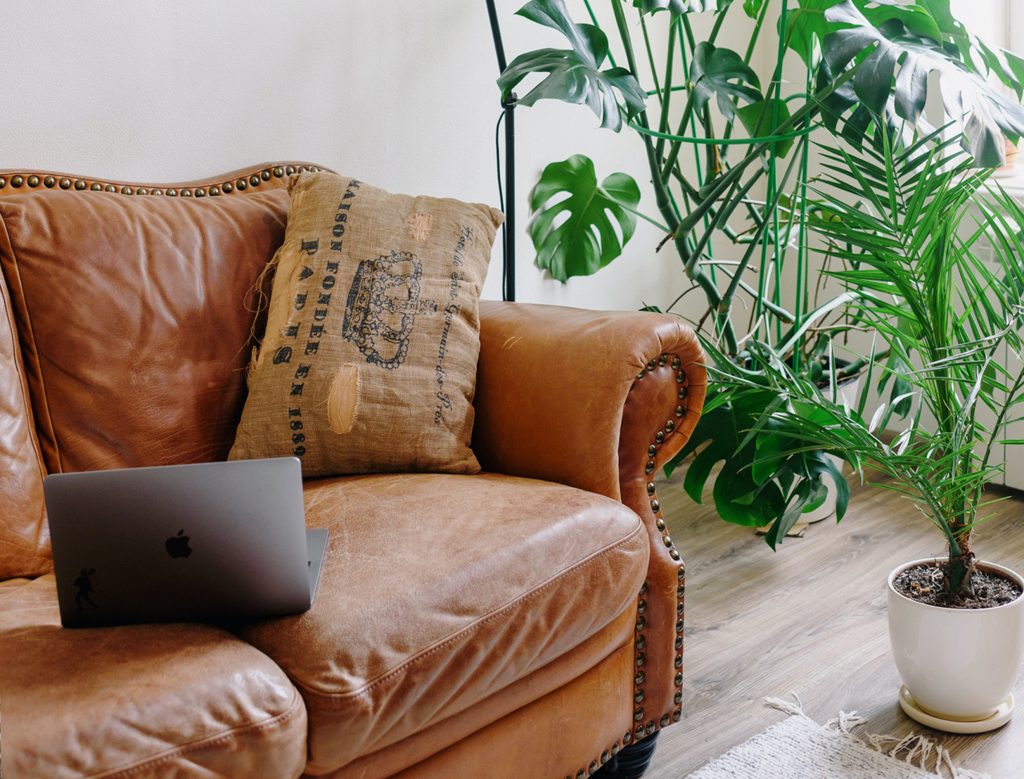
Applying a broad intercultural and inter disciplinary industry knowledge, improved strategies for creating environments that promote well-being and mitigate negative psychological impacts may contribute to living sustainably, for each individuals’ mindset and experiences. The human sensuousness intercepts subtle atmospheres in places, leaving us to consciously work with finer building block of the holistic nature of humans combined with representations of nature as adjusting parameters.
Crises Transformed
As an equivalent to societal crises, on a personal level of experience individual crises may be foundation for unfortunate behaviors and decisions impacting our built environment.
Leaving for example functionalism as a source of boredom and related unfortunate impacts, we do not necessarily imply the style of functionalism: while uncluttered and spacious surroundings are preferred, I here relate to the equivalent mind set. Neglecting emotional and relational aspects of human existence deprives our own holistic nature.
The concept of psychological waste in the context of personal spiritual growth was introduced by Jes Bertelsen, a Danish spiritual teacher and author. He refers to psychological waste as the accumulated negative thoughts, emotions, and patterns that hinder individual well-being and spiritual progress. He emphasizes the importance of recognizing and releasing this psychological waste to cultivate inner clarity and spiritual awakening.
Steen Hildebrandt, a Danish organizational psychologist, perspective the concept to conflicts, and dysfunctional patterns that accumulate by the mass of humans and hinder societal productivity and well-fare.
Transforming psychological waste is the pre-phase for applying spiritual intentions. “The 2030 Sustainable Development Goals (SDG) adopted in September of 2015 by the UN General Assembly signals a collective journey to ..transform lives..”.
Lives lived in any built environment may be invited to transformation by the human sensuousness of atmosphere in a place as design by a professionally trained Architect or Interior Designer. Our cleared senses intercepts subtle atmospheres in places, leaving us to enjoy our holistic nature combined with representations of nature as adjusting parameters.
Perspectives of Pre-conditions for Transformation and Welfare
Eastern Interior Practices
As globalization has facilitated cultural exchange, contemporary architecture and interior design practices increasingly draw inspiration from both Eastern and Western traditions, embracing a more holistic approach. A holistic approach considers functionality, sustainability, and the welfare of occupants. Concepts from Eastern philosophies such as Feng Shui are integrated into design practices to promote representations of nature as one of the core aims of Feng Shui. Some conventional scholars investigate Feng Shui as a mean to a mind-set solving our crises from a different set of preconditions in the built environment.
The Chinese philosophically based practice regulated by sumptuary laws, designs fixed structures and moving parts in the built environment to enhance the transformation of psychological waste in human cognition, emotion and behavior and invite to welfare. Studies, empirical observations, and anecdotal evidence suggest potential benefits and effectiveness of Feng Shui:
Conventional research in environmental psychology, such as studies by Kaplan and Kaplan, has shown that the physical environment can influence human behavior, emotions, and well-being. While not specifically focused on Feng Shui, this research suggests that intentional changes to the environment, such as those guided by Feng Shui principles, have psychological effects on individuals.
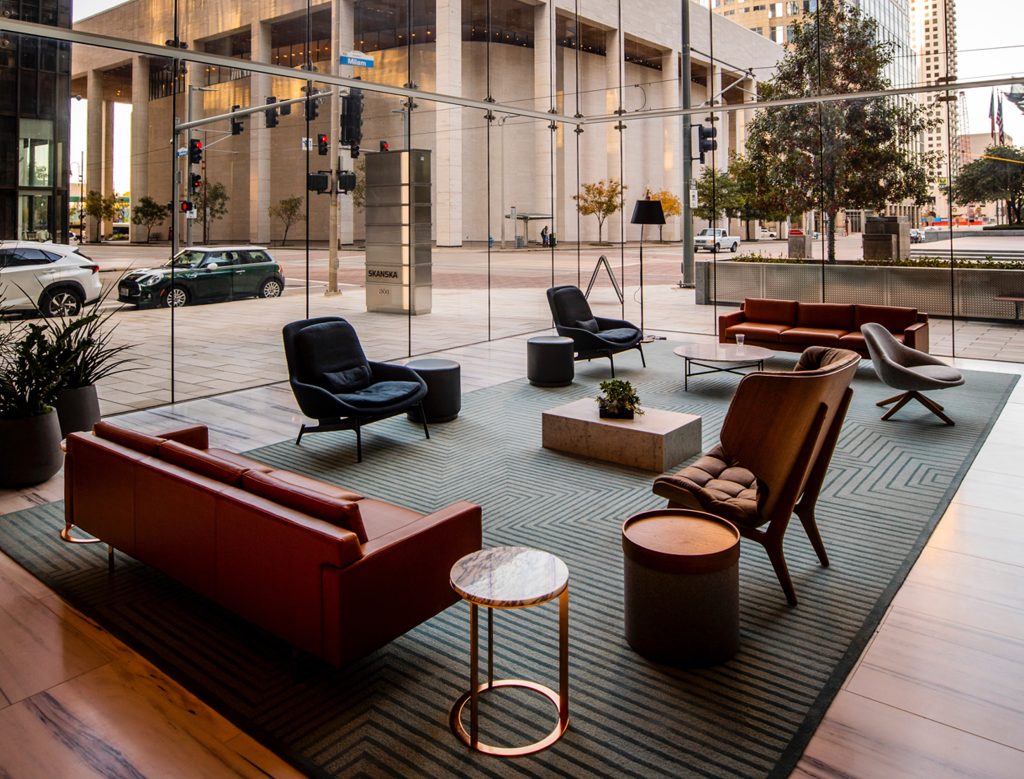
“Effects of Feng Shui on Stress, Health, and Prosperity Among Volunteers”, a study published in the Journal of Environmental Psychology, investigated the effects of Feng Shui interventions on stress levels, health outcomes, and perceived prosperity among participants. The study found some positive effects.
While these sources provide insights into the effectiveness of Feng Shui, it’s essential to approach the practice with a critical and open-minded perspective, recognizing that its benefits may vary depending on individual beliefs, cultural background, personal experiences and applied methodology. In the next paragraph below, I explore if our growing consciousness and experience of quantum mechanics could contribute positively to the environment, you live in, as a scientific contribution to perspective preconditions in the built environment for transforming spiritual waste and obtaining well-fare.
Preconditions for Designing Reality
We accumulate psychic material for waste transformation by neglecting our holistic nature of human experience and by neglecting emotional and relational aspects of human existence. When we transform our psychological waste, we expand our human capacity.
Creating the 2030 SDG, respected policy experts, psychologists, neuroscientists, academics, ethicists, journalists, and spiritual leaders participated. Their collective interest was to consider the question of human welfare and sustainability with attention to an increasingly global, inter-spiritual and multicultural convergence on the “interconnectedness” of the world’s seven billion people.
Their question was: “What deep human and organizational transformation is required to support the goals of sustainable development, and how might such transformation arise in human beings who have experienced suffering and trauma?”
The main conclusion was that “sustainable development requires a “spiritual transformation” of ourselves and the organizations we are linked with that actively extends to the societal, global, and ecological levels.”
Discussions on spirituality’s role in human living environments life may be found, in conventional literature on environmental psychology. Cultures outside the Western sphere more willingly tend to include aspects on human spirituality, nature, and our living environment, exemplified in Dr. T. Y. Lim’s Tao-teachings. The basic of a Taoist approach seems to be in accord with the pioneering work in natural sciences as e.g., quantum physics.
General comparison between Taoist principles and principles in quantum physics, drawing from common themes found in both domains refer to classic Taoist texts and to reputable sources including textbooks on quantum mechanics written by physicists and peer-reviewed articles in physics journals and works by prominent physicists. A general comparison follows as a small investigation related to the usefulness of applying principles in quantum physics to professionally trained Architects and Interior Designers in practical design of the built environment under the altered precondition of an environment conditioned for joy and welfare:
Interconnectedness and Unity
- Taoism: The concept of Tao emphasizes the interconnectedness and unity of all things.
- Quantum Physics: Principles like quantum entanglement and the wave-particle duality suggest that particles are interconnected and part of an underlying unity.
Complementarity
- Taoism: Yin and yang represent complementary forces that are interdependent and interconnected.
- Quantum Physics: The principle of complementarity, articulated by Niels Bohr, suggests that certain properties of particles are complementary and cannot be observed simultaneously with precision.

Uncertainty and Paradox
- Taoism: Embraces paradox and the limitations of language and conceptual thinking.
- Quantum Physics: Heisenberg’s uncertainty principle asserts that there are inherent limits to the precision with which certain pairs of physical properties can be simultaneously known.
Holistic Perspective
- Taoism: Views the universe as an interconnected whole.
- Quantum Physics: Challenges reductionist views of reality, emphasizing the interconnectedness of quantum systems.
Nonlinear Dynamics
- Taoism: Uses nonlinear metaphors to experience the dynamic nature of existence.
- Quantum Physics: Features nonlinear dynamics at the quantum level, including phenomena like superposition and entanglement.
Observer Effect
- Taoism: Emphasizes the role of awareness and intent consciousness in shaping perception.
- Quantum Physics: The observer effect suggests that the act of observation can influence the behavior of quantum systems.
These comparisons highlight common themes between Taoist philosophy and principles in quantum physics, demonstrating how both domains explore fundamental aspects of reality and the nature of existence.
A wording provided by natural science may be easier to accept for Architects and interior Designers not yet spiritually trained, ready to expand their human capacity.
Applying Spiritual Intention to the Reality of the Built Environment
Taoist practices emphasize harmonizing living conditions with nature and cultivating an awareness of the interconnectedness of all things. Principles and practices within Taoism align with the concept of applying spiritual intention to vitalize our living environment.
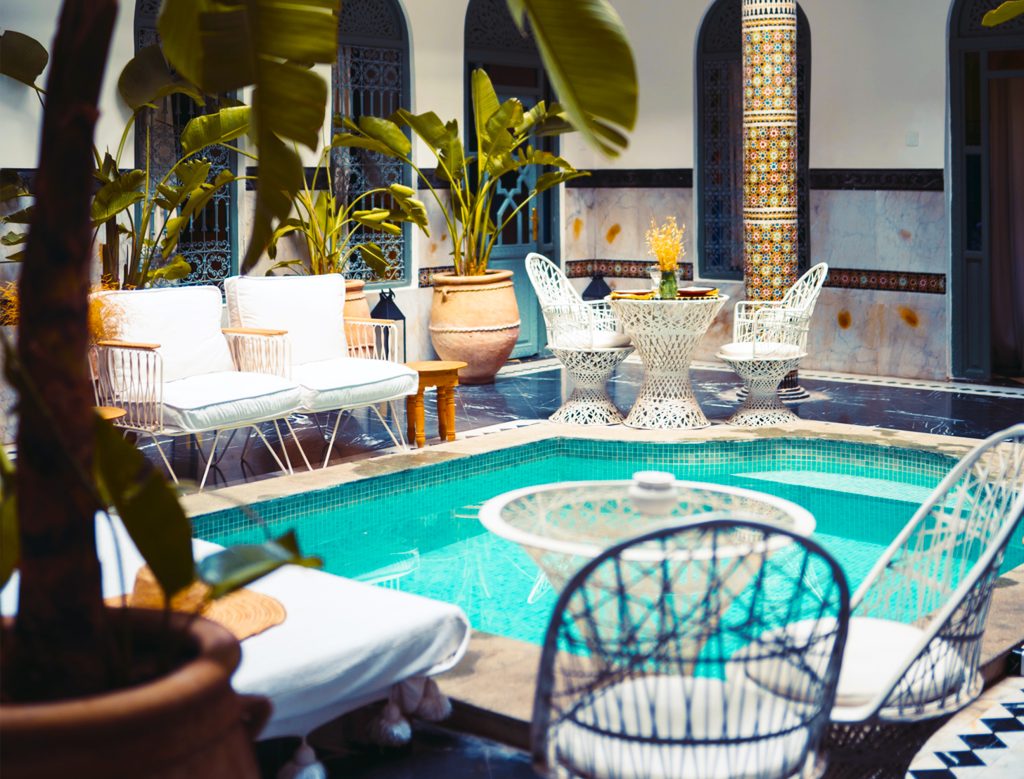
Taoist practices often involve cultivating and directing subtle energy to promote health and welfare in individuals and their surroundings. Spiritually trained Architects and Interior Designers align with Taoist practices in methods of applying spiritual intention to vitalize the living environment by using arrangements of natural energies, and more profoundly, by meditation and visualization techniques to connect and harmonize with energies of nature; cultivating clear intention and directing awareness, professionally trained Architects and Interior Designers aim to enhance their own and space users vitality and promote welfare in the living environment.
Now we reach the point of thinking out of the box, raising our mind set, enabling the possibility of improved welfare contributed by the built environment, from a higher awareness than our common awareness that we left, when it created the Gordian knot of current crises.
The applied methodologies by trained Architects and Interior Designers to the built environment resembles a lot to the principles described and exemplified by principles in quantum mechanics.
Dependent of the concept of the subjective objectivity, philosophical, psychological, and interdisciplinary perspectives highlight nuanced ways in which subjective experiences can reveal objective truths about the individual, human nature, and the world.
Roger Penrose’ Orch-OR theory proposes a connection between quantum mechanics and consciousness. While the theory delves into the potential role of quantum processes in shaping subjective experiences, supported by concepts from quantum mechanics that inform our understanding of self-awareness and human experience. Zohar’s work provides insights into the broader implications of quantum phenomena for subjective experiences.
The term “noetic” derives from the Greek word “noesis,” which refers to inner direct knowing. In contemporary Western approach, scholars refer to our individual noetic signature, during the conscious expansion of our human capacities, also useable for improving our built environment. Noetic signature is often used in spiritual contexts, suggesting a unique energetic or vibrational pattern associated with a person, environment, or phenomenon. The following notions describes ‘noetic’.
Energetic Resonance
The idea behind a noetic signature is that everything in the universe, including living beings, objects, and even abstract concepts, emits or possesses a distinctive energetic resonance or signature. This energetic signature reflects the inherent qualities, consciousness, and history of that entity.
Uniqueness
Just as every individual has a unique fingerprint, the concept of a noetic signature implies that every professional Architect, Interior Designer, and space user has her/his own unique energetic imprint. This imprint is shaped by factors such as genetics, experiences, emotions, and consciousness.
Perception and Sensing
Noetic signatures are measurable by for example kinesiology. After aligning measures with personal experiences over time individuals may perceive or sense energetic patterns through trained intuition, extrasensory perception, or subtle energy awareness.
Healing and Transformation
In spiritual and holistic healing practices, the recognition of a noetic signature is often central to the understanding of health and welfare conditions arriving from a defined built environment. Professionally trained Architects and Interior Designers workwith environments to identify and shift energetic imbalances or blockages within environmental noetic signatures to promote healing and transformation on physical, emotional, and spiritual levels, releasing energy to be used here and now.
Connection to Consciousness
The concept of noetic signatures is deeply connected to the nature of consciousness and the interconnectedness of all things. Consciousness is seen as the underlying source of all creation, and every manifestation in the physical world carries a unique expression of consciousness.
Applied Practices of Quantum Physics
The concept of “noetic” and core notions in quantum physics share some intriguing parallels. I desire to parallelize to reach to a point of understanding regarding what natural sciences theorizes, here limited to, and exemplified by quantum physics, is already applied practices in noetic services to the built environment.
Subjectivity and the Observer Effect
- Noetic Concept: In spiritual and metaphysical contexts, the term “noetic” often refers to inner direct knowledge gained through trained spiritual insight. It emphasizes the subjective aspect of consciousness and the importance of personal experience in understanding reality.
- Quantum Physics: Quantum physics introduces the observer effect, which suggests that the act of observation can influence the behavior of quantum systems. This implies a fundamental connection between the observer and the observed, highlighting the role of consciousness in shaping reality. McTaggart, a science journalist, and author has written extensively on the intersection of quantum mechanics and the observable world, particularly in the context of consciousness and healing. McTaggart’s work often explores how quantum principles influence our understanding of the material world. Regarding the observer effect, the act of observation influences the behavior of particles, hence she suggests that consciousness plays a fundamental role in shaping reality.
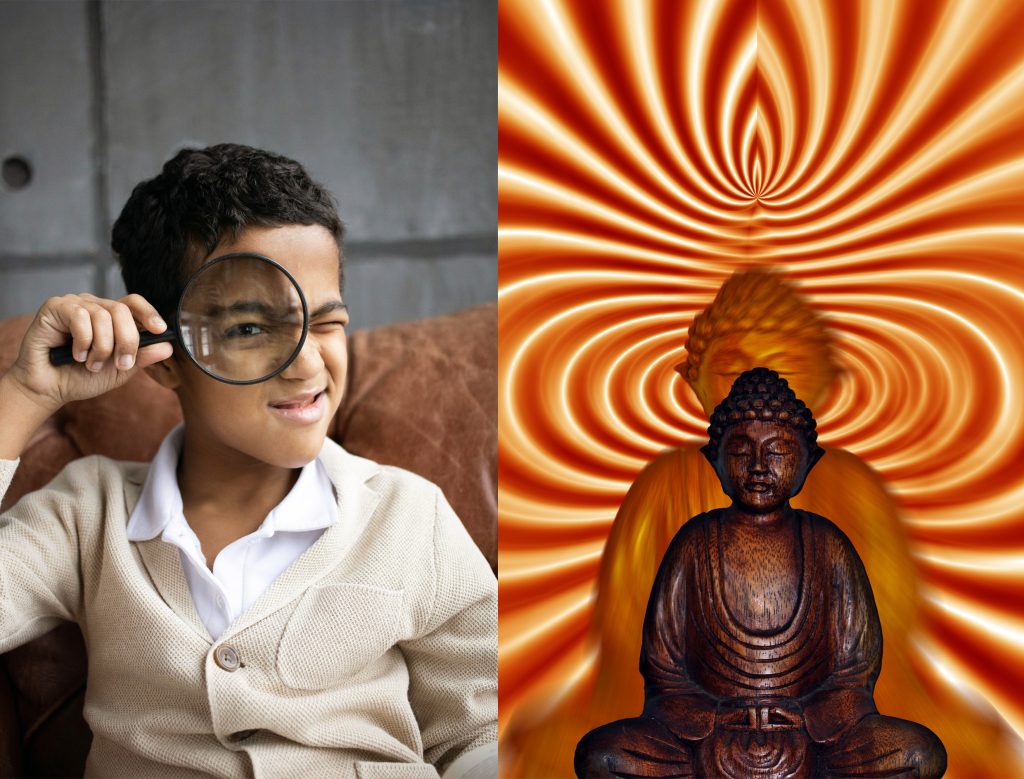
Nonlocality and Interconnectedness
- Noetic Concept: Noetic interconnectedness emphasizes that consciousness is not confined to individual minds but is interconnected at a deeper level. This is a holistic view of reality in which everything is inherently connected.
- Quantum Physics: Quantum physics reveals phenomena such as entanglement, which implies instantaneous correlations between particles separated by vast distances. This nonlocal connection challenges classical notions of locality and suggests a profound interconnectedness at the quantum level. The phenomenon of quantum entanglement has implications for our understanding of interconnectedness in the physical world. For example, McTaggart examines how quantum principles inform alternative healing modalities and the concept of “intentional healing.” She suggests that the focused intention of individuals may influence the quantum field and promote healing.
Unity of Consciousness and Reality
- Noetic Concept: A unity between consciousness and reality, avails the personal experience that consciousness plays a fundamental role in shaping and perceiving the world.
- Quantum Physics: Quantum physics challenges the classical view of a separate, objective reality, suggesting instead a more participatory role for the observer in the creation of reality. The concept of superposition implies that particles can exist in multiple states simultaneously until observed, blurring the boundary between observer, and observed. Also, Lynne McTaggart explores the potential for coherence to influence biological processes such as cellular communication. Quantum coherence could be involved in processes such as the functioning of the human brain.
A question may easily arise in the line of ‘how can the theories of quantum physics be practically applied to the built environment by trained professionals?’ They already are, based on:
- The fundamental connection between the professionally trained Architect or Interior Designer and the built environment, highlighting the role of the designer’s consciousness in shaping reality.
- The profound interconnectedness between the professionally trained Architect or Interior Designer and the materials, places, and times of a particular built environment.
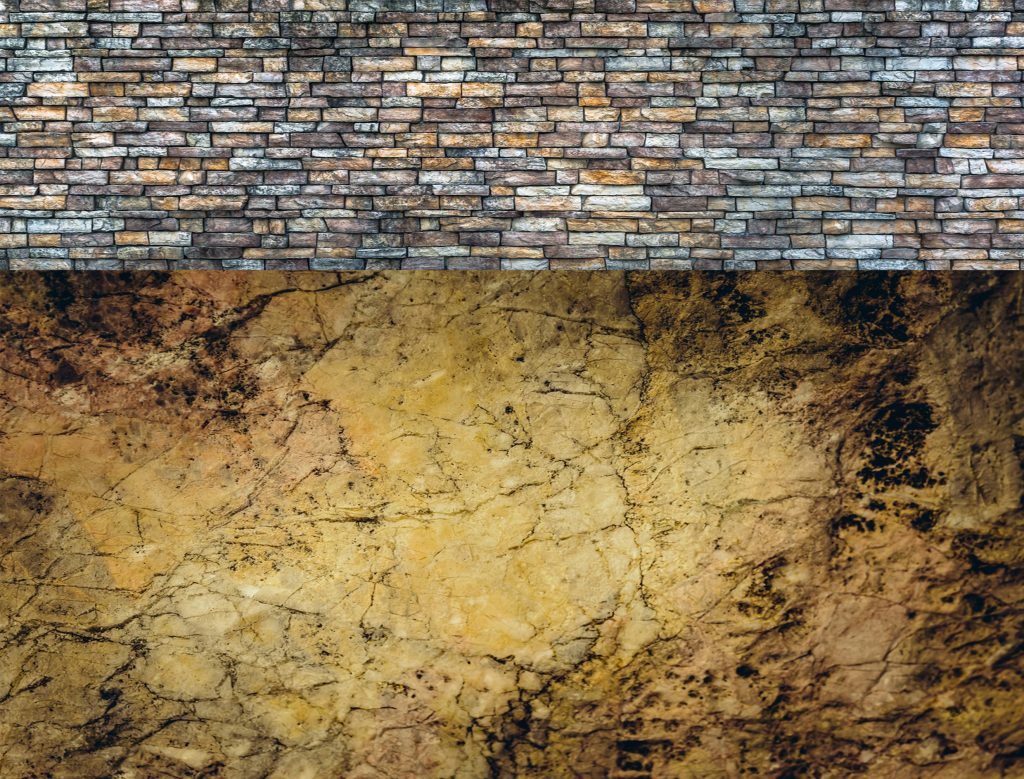
- That there is no separation between professionally trained Architects and Interior Designers and other reality around us when in defined conscious states.
However, as per the limitations of this article, applied quantum physics does not reveal the entire dynamics of preparing the built environment for welfare of its space users.
Some Architects and Design Professionals have the noetic signature to connect with fluctuations in our environment. When a human being, with her/his intentions, ‘is’ a defined element in the immediate environment with which he/she connects, another conscious level, or ‘mind’ according to the Einstein quote, is used: a universal, interconnected consciousness level, to ‘solve’ or improve our current ‘problems’ or crises, expressed in the local built environment.
Spiritual transformation as per the UNFPA and release of undesired psychological waste in our built environment by noetic connections might happen on small scales, per piece of land inclusive the built environment, for the landowners or, when the professionally trained practitioner has gained leverage by training and experience, on larger areas of built environments and their surroundings.
Influential Insights: Quantum Physics Applied to Transformation the Built Environment
I desire to translate the basic notions of quantum physics as mentioned above to enlighten an extended method applied by professionally trained Architects and Interior Designers to the built environment. Our aim is to convert our built environment to invite to space users’ welfare. With the content related translation below, quantum physics is made a personal experience.
A new set of preconditions are made possible when we recognize that our biological brain is not synonymous with our consciousness, and that trained professionals can choose to work at various consciousness levels.
- The trained Architect or the Interior Designer performs intentional healing by connecting to the quantum field, that ultimately shape the properties of matter and energy in our built environment.
- Experience Complementarity by various dynamics of natural complementary forces in the built environment and the influences on space users’ physical and psychological wellbeing.
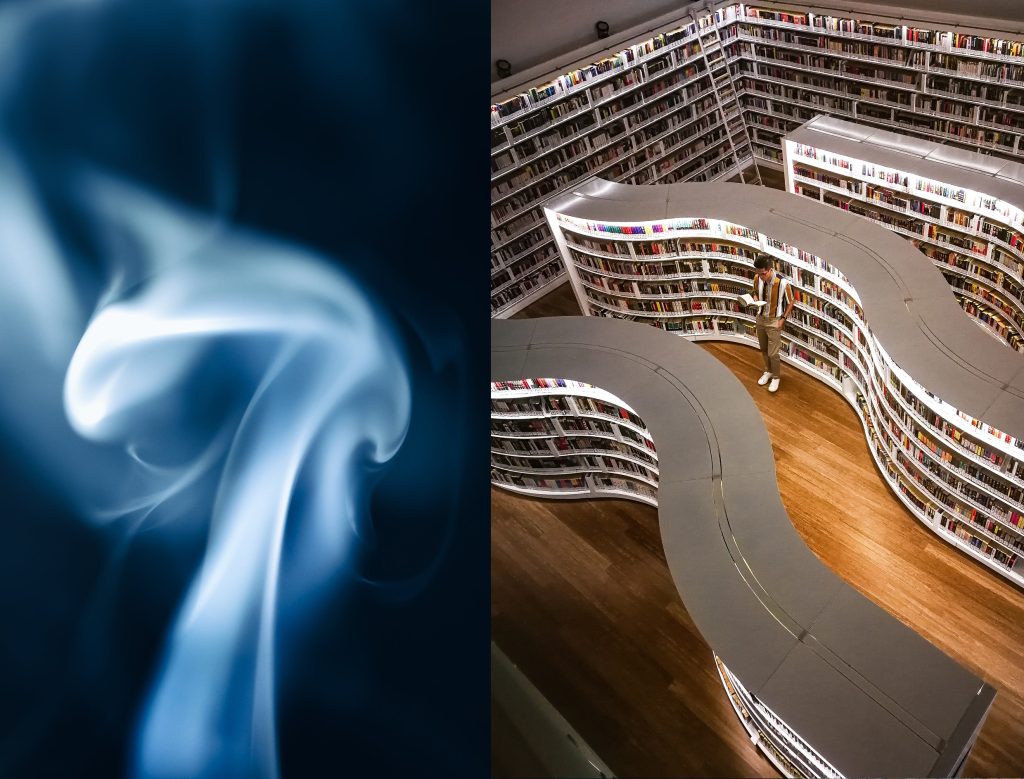
- The principles of ‘Uncertainties and Paradoxes’ invite the practitioner to open to communication on far greater band widths than the band width used when communicating by words and body languages. Expanded human capacity include using our senses freed from psychological waste.
- Holistic interconnectedness includes the connectedness between ‘I am’ and ‘we are’: We are one. That experience is used for intentional healing. Healing of the built environment, its history, and the desired welfare cannot be healed more than the practitioner is freed from psychological waste.
- The intentional healing and invitations to space users’ welfare is enabled at the exact ‘now’ when the practitioner connect to the built environment. However, the healing and welfare comprises both future and past, as the spiritual work performed takes place beyond our space-time continuum. This point relates to the quantum physics notion of nonlinear dynamics.
- The observer effect is experienced by the practitioner as ‘I’ in both the materials of the built environment, the interaction between elements, and the desired induced healing and welfare. When the practitioners expanded ‘I’ have the intention of e.g., healing, then everything that is ‘I’ obtains that healing, meaning both the materials of the built environment, the interaction between the elements and the practitioner self.
Contemporary interior design is influenced by holistic sciences and the quantum paradigm, which recognize the interconnectedness of the here mentioned phenomena and the influence of consciousness on reality. However, the consideration of the energetic qualities of materials, colors, and spatial arrangements exists far beyond psychological and emotional responses they evoke. Consciousness of space-users’ unique preferences are subject to, inter alia, the above translated dynamics of quantum physics for the trained Architect and Interior Designer to create spaces that not only look aesthetically pleasing but also invite to holistic well-being, welfare, and personal growth. By integrating insights from Eastern and Western design traditions, as well as holistic sciences and the quantum paradigm, contemporary interior design has evolved into a multifaceted discipline that prioritizes the creation of environments that nurture the body, mind, and spirit of their occupants.

Innovative Ideas on Industry Structure and Business Development
The demand for goods and services catering to the LOHAS (Lifestyles of Health and Sustainability) market has been steadily increasing. According to various reports and studies, the LOHAS market is estimated to be significant and growing. For instance: The Total Addressable Market (TAM) for the United States Lifestyle of Health and Sustainability (LOHAS) is estimated to be approximately USD 472.51 billion in 2022.
The current estimate is that LOHAS consists of about 100 million people worldwide and that approximately 20% of the population in Europe may be labelled LOHAS consumers.
However, how do these principles become viable in our daily lives?
New realizations of contexts and possibilities, contribute new concepts to the architect and the interior design industries. This needs to be trained.
Teaching promotes left brain understanding, acceptance, exercises, and experiences of how our new structures work. Professionals need spiritual training because the individual cannot know others better than he/she knows himself. If the professionally trained has transformed psychological waste, there is potential for a valuable service for the customer. Education trains personal empowerment and special abilities for earth healing. These transformational techniques can result in revitalized living and working spaces for individuals and businesses, so that they can more easily realize their full potential. The training may activate students to live and work at much higher level of effectiveness, and acts as a personal guide in their efforts to realize their full potential as healers of the planet earth.”
Growth in the project industry includes types of services and number of services professionals can offer for clients’ sustainable growth. The following services may serve as examples:
- Curating the built environment: Reading energies and their consequences.
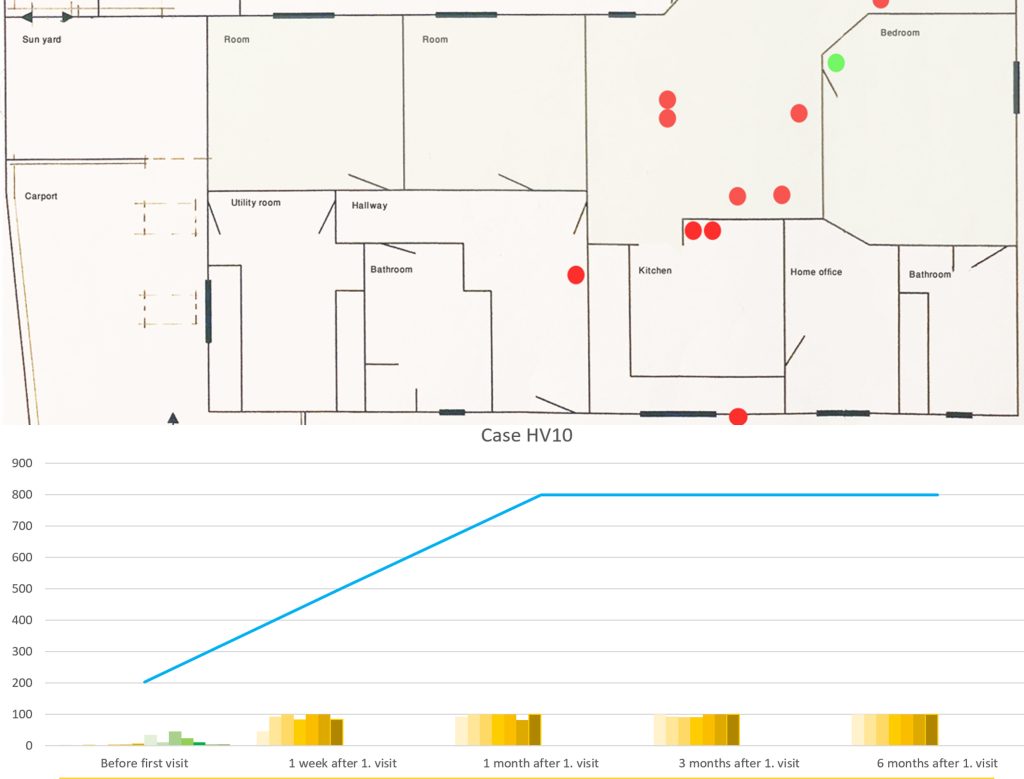
“All energy signatures, like those of earlier human occupation, remain. Additionally, natural earth formations such as underground watercourses, earth dislocation or black streams always leave an energetic vibration behind. These can have a positive or negative impact on the (space users)”.
Grand master Dr. J.T.Y. Lim, on www.feng-shui.com
Curating the built environment assess the state of the land piece or the house ground, before and without healing or neutralising.
- Healing and releasing of unfortunate energies in and around the built environment.
- Induce desired consciousness for health, welfare, and support in the built environment.
- Apply natural complementary dynamics of materials, colors and shapes in architecture and interior design of the built environment to the space users’ preferences.
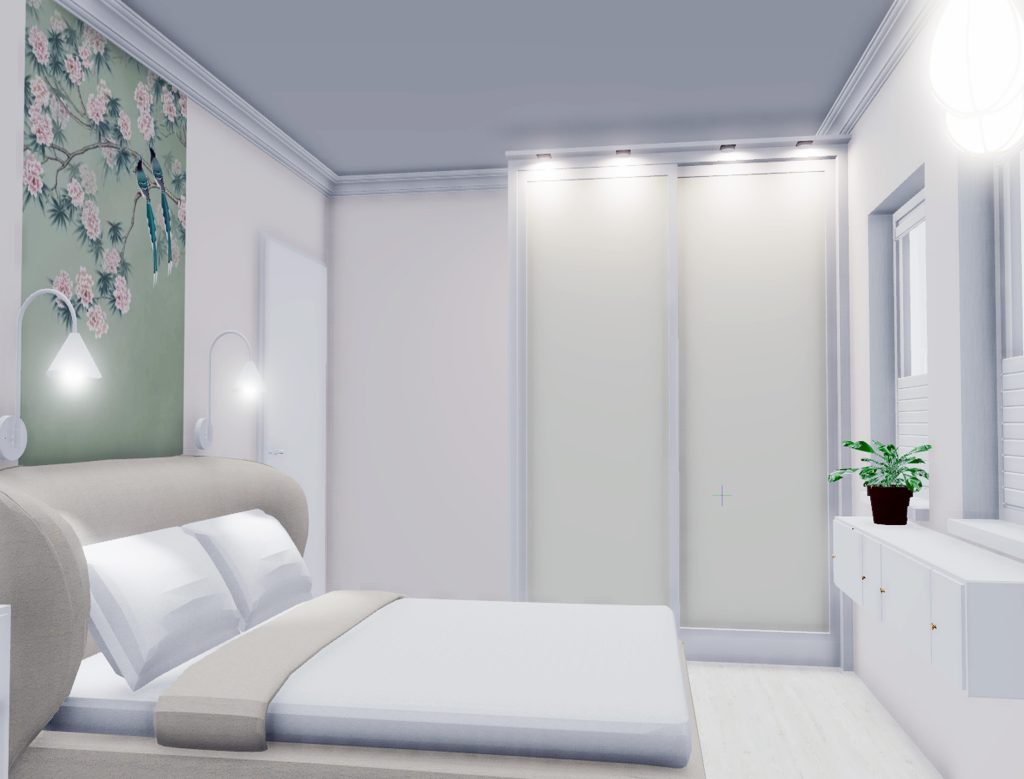
- Shaping the surrounding environment so that energies arrive optimally through doors and windows in relation to individual preferences.
- Certification: of the grade of the trained Architect and Interior Designer, and of the resulting environment.
Human expansion of own capabilities leads to expansion in the industry, with altered conditions e.g., that matter can be seen as a form of natural dynamic energy.
What is Your Experience?
It is crucial how trained Architects and Interior Design professionals establish their images and visions, in order to identify the highest potential future of the individual’s work and the individual’s contribution to her/his company and the company’s customers. It helps to be with others to see clearly, to correct and make appropriate decisions, points out Steen Hildebrandt.
In that light, I desire to share experiences with you; to share how you and I experience a given built environment.
In the word experience, there is no left brain understanding or mental activity. Experience belongs to the world of sensory attention. For some, this is a natural way of taking part in life, while others have to ‘stretch’ their spaciousness.
Have you for example experienced the following:
- How does the ground feel when it is poisoned? When you connect to it, do you experience a stomachache, or other sensations?
- Sitting in old houses build over water, either water in sight or underground, can you feel different degrees of eloquence that reach the point of vertigo?
- And did you ever experience the unprotected experience when a spirit is around?
Did you naturally react to your experiences, or did you consciously act on your experiences? The point is to reach a stable state from which you release the energies on the spot. Thereafter, you might heighten the energy level to the benefit of the welfare and support of the client.
Please write your experiences to me on:
https://www.blissbode.live/ – thank you.
Shaping the Direction of the Interior Industry
We have reached a higher ‘mind’ for Architects and Interior Designers to contribute to ‘solutions’ on world crises concerning the built environment. We have recognized opportunities by using a method that operates outside our known space-time continuum. This is followed by initial narratives for business development of architect and interior design companies.
Transforming the outlook of the crises as we think, we know them, by contributions of new services in the architecture and interior design industries, potential narratives may be outlined below.
Economic growth and human authenticity
Steen Hildebrandt describes why financial management, and here of relevance to architect and interior design companies, cannot prioritize the industry’s or the space users’ problems based on any advanced economic calculations. The companies’ driving capital may beneficially be viewed as living assets, i.e. people, professionals and space users’ specific preferences for natural environments as promoted by J. Bragdon.
Design of our environments by the above principles can be used to plan our environment to receive multiple opportunities, with reduced effort. Six new types of services, that will develop into a broad variety depending on the architect or interior company that supply them, and on the types of clients ranging from e.g., farmers, cultivating agriculture to hospitality.
Transcending disparities to the virtues of human authenticity enable a new set of honest resources contributing to welfare and addressing the planning and design for how to be impacted by the surrounding environments.
United responsibilities
Sustainability applied in a visionary way is eased by being with others to clearly see the industry’s contribution to our common inner development goals, so that you can make appropriate decisions.
P. Drucker emphasizes that many of these problems lie outside the realms of politicians and belong to domains for which managers of private, public, and voluntary organizations are responsible. Managers and other people have responsibility for the whole, the system’s parts and the system’s surroundings. This may mean that managers are responsible for the company, employees for co-employees, technologies and processes, and trained Architects and Interior Designers for our environments. Architectural and interior design companies’ driving capital is living assets. When architectural and interior design companies’ management reach beyond their own enterprise and into the society, nature, and the people the companies interact with, then running the business becomes a social responsibility.
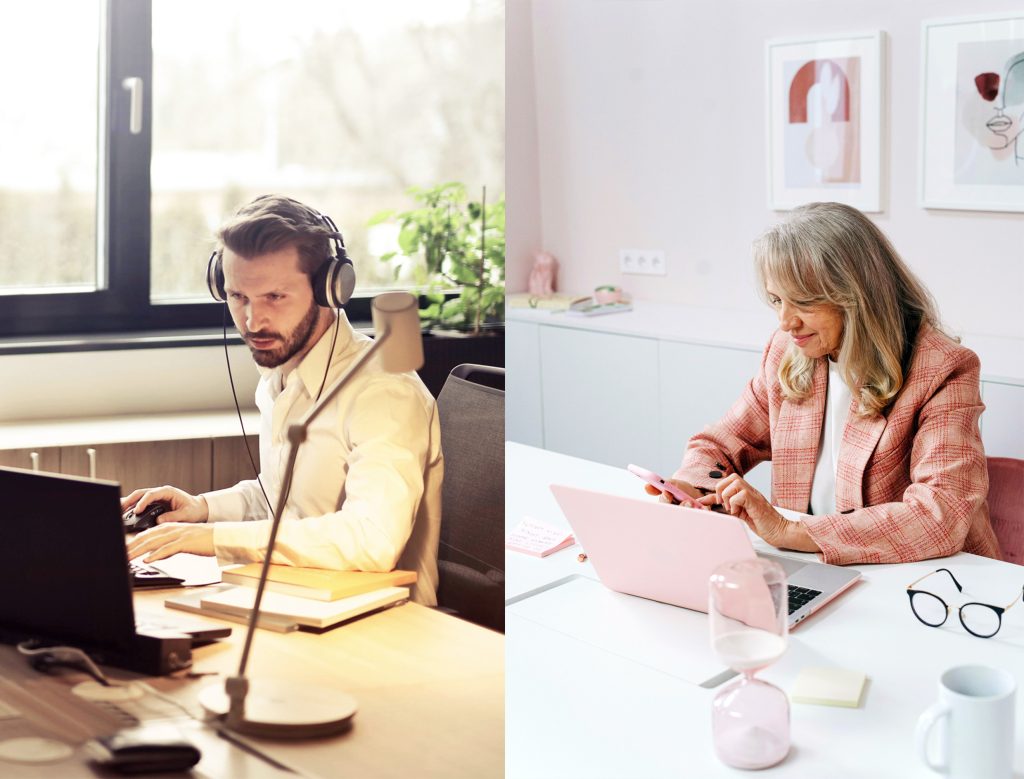
Co-creations, not only with clients but amongst practitioners depending on the scale of projects; how large buildings or grounds that may be neutralized, healed and re-vitalized in a coherent effort.
Environmental interdependency
Urgent connections with nature and our co-living systems are eased by coherently working with natural elements, materials and patterns based on the premise of organic dynamics.
Economic systems are subsystems of biological living systems, living assets are people and nature, and they are the source of non-living assets, as they are the source of profit. Steen Hildebrandt refers to J. Bragdon in the view that profit arises from life and profit serves life.
Designing our surrounding environments, or the arrival of the environments into the built area, is design of the complementary and other regularities in the life of matter, shapes and colors surrounding us.
“We think we affect the environment, but not as much as the environment affects us”,
Stephen Skinner, Grand Master
Planning for welfare and success by design of the environment requires a performance preconditioning that we design the environments around us, to impact us in accordance with our preferences and desires.
Health
Evidence Based Design is applied design improving humans physical and partly psychological conditions. Our new understanding of the physical and psychological realities of humans, that a coherent consciousness is the foundation for how we live, enables expanded human capacities. When our individual partaking in our coherent consciousness is applied, we will experience how we can also heal the traumas which reside in the environment, constantly impacting us.
Healing and releasing of energies in the built environment, releases environmental related illnesses to clients living or working on the site. From an industry point of view, we are interested in society going well, that people are healthy and enterprising.
By applying the above principles, we can achieve a built environment that enables health and invites the individual to enterprising.
Professional training enables applying above principles as recognized by a German insurance director during an interview with O. Scharmer: “The success of an intervention or change depends on the inner state of the person who makes the intervention or change”.
Disruption by expansion of human capacity
Technological disruptions leave quite a few job vacancies and is often experienced as reducing social cohesion. However, changing the position of technology due to the extent of ease it may provide our daily lives, also changes the position of the individual human being, more accurately the position of the individuals state of mind, our consciousness: ‘I’ and our coherence. This is a spiritual disruption started.
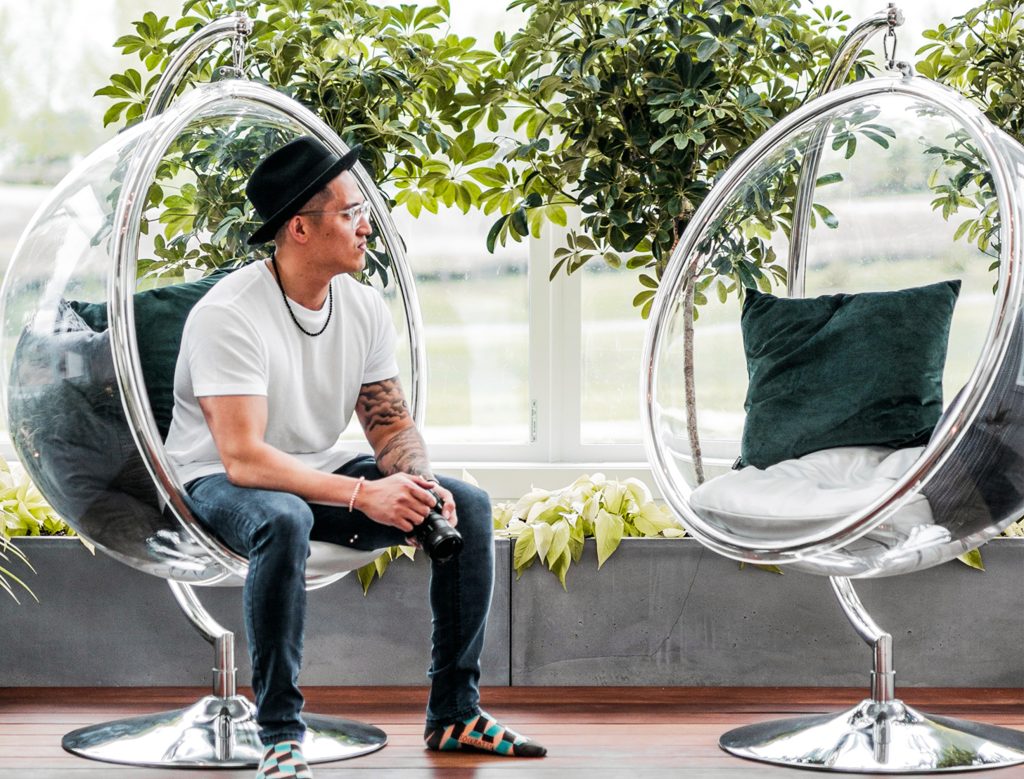
Internal industry disruption is companies’ chance for business development. “When profit arises from life” and we are dependent on and connected to each other via nature, then it is crucial that we recognize our own light. Nelson Mandela’s inaugural speech upon assuming presidency of South Africa:
“Our deepest fear is not that we are inadequate. Our deepest fear is that we are powerful beyond measure. It is our light, not our darkness, that most frightens us. We ask ourselves, ‘Who am I to be brilliant, gorgeous, talented, fabulous?’. Actually, who are we not to be? You are a child of God. Your playing small doesn’t serve the world. There’s nothing enlightened about shrinking so that other people won’t feel insecure around you. We are all meant to shine, as children do. We are born to make manifest the glory of God that is within us. It’s not just in some of us; it’s in everyone. And as we let our light shine, we unconsciously give other people permission to do the same. A we’re liberated from our own fear, our presence automatically liberates others.”
Nelson Mandela
Targeting the LOHAS market consumers, the category is linked together by their values and beliefs. These people are demanding, creative, active, well informed, and influential. They are characterized as early adopters of new consumer behavior in many markets.
Common spaciousness and personal significances
Interdisciplinary approach to architecture and design may reduce suboptimization, when living sustainably, driving by inner sustainability goals include far greater cycles ranging from geography and biology to transcendence of psychological waste.
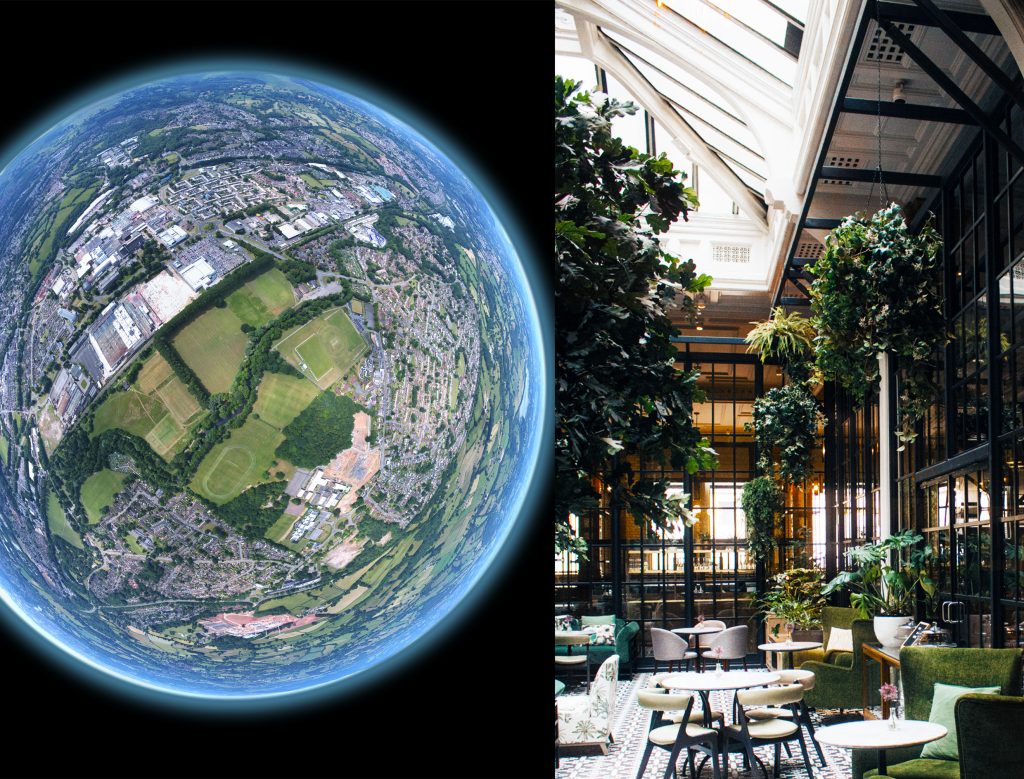
“All our actions have a universal dimension. When we neglect the well-being of others and ignore the universal dimension of our actions, we will inevitably end up regarding our own interests as separate from those of others.”
Dalai Lama, Ethics for the new Millennium.
Every individual and every company have another identity, namely an opportunity, a potential that lies in the future and which is the highest future potential of this individual or this company. The highest future potential can be described through images, and from those images we can begin a realization of the highest possible future potential, suggests Steen Hildebrandt.
The highest possible future pertaining to the built environment includes a rating of the built environment integrated to DGNB or the like organizations. Spaciousness and personal talents may be developed during training and incorporated as a parameter into the certification model.
Altered Living Conditions
Thank you, for letting me contribute with my expertise and visionary insights to co-create the direction of the architecture and interior design industries. I aim to avail transcendence of ‘the third skin’ into a reality that includes inner sustainability and industry growth while human transformational skills interconnect nature and reality. If not, the architecture and interior design industries are under liquidation.
The architecture and interior design industries have become more conscious by the intriguing similarities between quantum physics and Taoism and its realization by our individual noetic signature, using various representations of nature as a mean and a method.
Architects and interior designers expanding their human capacity contribute, industry wise, to introduce novel concepts, methodologies, and spiritual structures to the industry clientele. We challenge conventional thinking, inspire creativity, and anticipate future trends, drive innovation, and push the field forward.
Disrupting the built environment enables an altered industry structure and a broad range of business developments from teaching, over projects, including their processes and methodologies, to certifications.
Sources and Inspiration
“DGNB System.” Deutsche Gesellschaft für Nachhaltiges Bauen. https://www.dgnb-system.de/en/ , accessed 08-04-2024
Speer, Albert Jr. “Architecture is the Third Skin.”
https://stephengpost.com/downloads/UNFPA%20Enhancing%20Human%20Flourishing.pdf , accessed 31-03-2024
https://innerdevelopmentgoals.org/ , accessed 31-03-2024
https://noetic.org/ , accessed 31-03-2024
https://galileocommission.org/ , accessed 31-03-2024
“The Spirit Level: Why Greater Equality Makes Societies Stronger” by Richard Wilkinson and Kate Pickett;
“Capital in the Twenty-First Century” by Thomas Piketty.
Hildebrandt, S. (2014). “Vækst og Bæredygtighed – en Balancegang i Ledelse og Liv” (Growth and Sustainability – A
Balancing Act in Leadership and Life).
“David Adjaye: “Form, Heft, Material” by David Adjaye
“The Big Sort: Why the Clustering of Like-Minded America Is Tearing Us Apart” by Bill Bishop; “The Populist
Temptation: Economic Grievance and Political Reaction in the Modern Era” by Barry Eichengreen.
Hildebrandt, S. (2017). “Styring og Styringsevne” (Governance and Governance Capacity).
“BIG: Bjarke Ingels Group Projects 2001-2021” by Taschen
“This Changes Everything: Capitalism vs. The Climate” by Naomi Klein; “The Sixth Extinction: An Unnatural History”
by Elizabeth Kolbert.
Hildebrandt, S. (2012). “Bæredygtig Ledelse – en 3D Model” (Sustainable Leadership – a 3D Model).
“Deaths of Despair and the Future of Capitalism” by Anne Case and Angus Deaton; “The Great
Influenza: The Story of the Deadliest Pandemic in History” by John M. Barry.
“The Fourth Industrial Revolution” by Klaus Schwab; “The Age of Surveillance Capitalism: The Fight for a Human
Future at the New Frontier of Power” by Shoshana Zuboff.
“The Age of Migration: International Population Movements in the Modern World” by Stephen Castles and Mark
Miller; “Aging in the Right Place” by Stephen Golant.
Hildebrandt, S. (2015). “Innovation – et Overblik” (Innovation – An Overview).
https://siyli.org/problem-solving-the-siyli-way/, accessed 26-03-2024
“The History of Interior Design” by John Pile; “Interior Design Illustrated” by Francis D. K. Ching
Skinner, S. (2014). Feng Shui: “The Living Earth Manual”. Tuttle Publishing.
Lim, J.T.Y., “The Essence of Feng Shui”. [Publisher].
Lim, J.T.Y., “Feng Shui: A Hong Kong Perspective”. [Publisher].
“Interior Design” by Jenny Gibbs; “History of Interior Design” by Jeannie Ireland
“Bauhaus: 1919-1933” by Magdalena Droste
“Functionalism Revisited” by Jon Lang
Pawson, J. (1996). Minimum. Phaidon Press.
Riello, G., & McNeil, P. (Eds.). (2010). Luxury: A Rich History. Oxford University Press.
Danah Zohar: “The Quantum Self” and “Spiritual Capital.”
John Jonides and colleagues, “The mind and brain of short-term memory”
Wijnand A. P. van Tilburg and Eric Klinger (“Reflections on the psychology of boredom: implications for treatment of
boredom-related disorders”
Rachel Kaplan and Stephen Kaplan, “The experience of nature: A psychological perspective”
Gifford, R. (2014). “Environmental Psychology: Principles and Practice” (5th ed.). Optimal Books.
Ulrich, R. S. (1984). “View through a window may influence recovery from surgery”. Science, 224(4647), 420–421.
Bench, S. W., & Lench, H. C. (2013). “On the function of boredom”. Behavioral Sciences, 3(3), 459–472.
Bratman, G. N., Daily, G. C., Levy, B. J., & Gross, J. J. (2015). “The benefits of nature experience: Improved affect
and cognition. Landscape and Urban Planning”, 138, 41–50.
Bertelsen, J. (2001). “Essence and Way: A Journey in Self-Realization.” University of Arkansas Press.
Hildebrandt, S. (1996). “Psykologisk affald: Om konflikter, kreativitet og ledelse i organisationer” [Psychological
Garbage: On conflicts, creativity, and management in organizations]. Copenhagen Business School Press.
https://stephengpost.com/downloads/UNFPA%20Enhancing%20Human%20Flourishing.pdf , accessed 30-03-2024
“Feng Shui: The Art of Creating Harmony in Your Home” by Ole Bruun; “The Japanese House: Architecture and
Interiors” by Alexandra Black
Studies by Rachel Kaplan and Stephen Kaplan
https://stephengpost.com/downloads/UNFPA%20Enhancing%20Human%20Flourishing.pdf, accessed 29-03-2024
https://www.feng-shui.com/en/geomancy.html , accessed 30-03-2024
Stephen Skinner, https://www.sskinner.com/ , accessed 29-03-2024
Rose Sangregorio; https://metaphysicalcenterofcanada.com/ , accessed 29-03-2024
Example of source: Heidegger, in “Being and Time,”
“The Emperor’s New Mind: Concerning Computers, Minds, and The Laws of Physics” by Roger Penrose
“The science of Channeling”, Helané Wahbeh
“The Holographic Universe” by Michael Talbot explores the implications of the observer effect for understanding consciousness and reality.
“Quantum Enigma: Physics Encounters Consciousness” by Bruce Rosenblum and Fred Kuttner discusses the connection between quantum physics and consciousness.
McTaggart, Lynne, “The Field: The Quest for the Secret Force of the Universe” (2008)
“The Quantum Universe: (And Why Anything That Can Happen, Does)” by Brian Cox and Jeff Forshaw
McTaggart, Lynne, “The Intention Experiment: Using Your Thoughts to Change Your Life and the World” (2007)
“The Self-Aware Universe: How Consciousness Creates the Material World” by Amit Goswami
Paper: “Neuroscience, Consciousness, Spirituality, God: Seeking the Whole” by Helané Wahbeh et al.
“Holistic Spaces: 108 Ways to Create a Mindful and Peaceful Home” by Anjie Cho;
“The Quantum Revolution in Philosophy” by Richard Healey
https://askwonder.com/research/lohas-market-research-brgpmi96r , accessed 02-04-2024
https://www.lohas.se/about-lohas/ , accessed 03-04-2024
https://www.feng-shui.com/en/geomancy.html , accessed 02-04-2024
https://www.feng-shui.com/en/geomancy.html , accessed 02-04-2024
Bragdon, J. “Economics that mimic life”, 2021 Routledge
1960s American systems theorist and management researcher R.L. Ackoff on systemic thinking
© Mechanical, photographic, or electronic reproduction of this document or parts thereof is prohibited without the Blissbode’s written consent.
